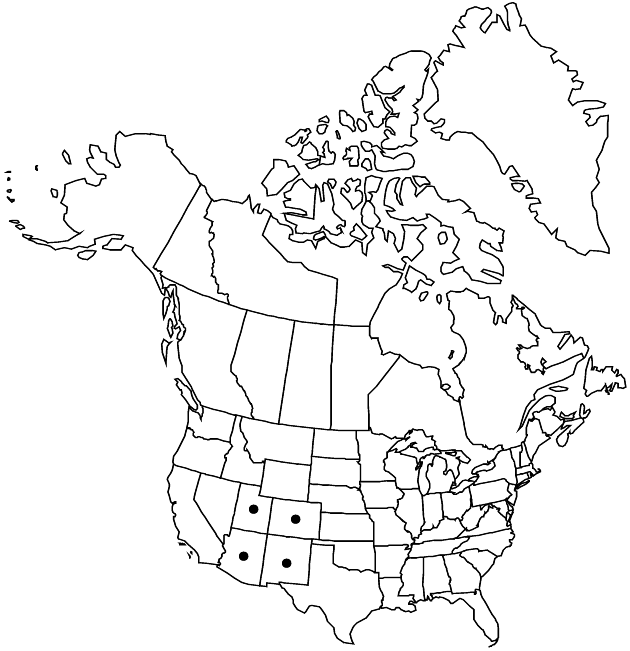Cirsium arizonicum var. bipinnatum
Sida 21: 209. 2004.
Stems glabrous to tomentose, usually without septate trichomes. Leaf blades unlobed to deeply divided, faces glabrous to tomentose on one or both, usually without septate trichomes; main marginal spines slender to stout, 3–10 mm; cauline bases narrowed to truncate or clasping or decurrent as spiny wings to 30 mm. Involucres cylindric or ovoid to campanulate; spines of mid phyllaries 1–6 mm, slender to very stout. Corollas usually lavender to purple or reddish purple, 22–34 mm, tubes 7–12, throats 4–9 mm, lobes 8–18 mm; style tips 1.2–4.5 mm.
Phenology: Flowering spring–summer (May–Oct).
Habitat: Canyons, rocky slopes, desert scrub, pine-oak-juniper woodlands, openings in montane coniferous forests
Elevation: 900–3100 m
Distribution

Ariz., Colo., N.Mex., Utah.
Discussion
Variety bipinnatum grows in the Colorado Plateau of New Mexico, northeastern Arizona, southeastern Utah, and southwestern Colorado south to the Sacramento Mountains of southern New Mexico. It is a polymorphic assemblage of races and local populations with overlapping patterns of variation. Extremes are diverse and strikingly different, and various authors have attempted to segregate variants as species, subspecies, or varieties. Apparently independent segregation of character states of multiple variable characters has resulted in a complex array of local morphotypes. Leaves range from wholly glabrous to densely tomentose on one or both faces. The bases of cauline leaves vary from sessile and not at all decurrent to prominently decurrent with spiny wings to 3 cm. Leaf lobing and spininess are similarly variable. Heads may be solitary at the branch tips or densely clustered. I have been unable to detect patterns that can consistently separate the many forms in any meaningful way.
Selected References
None.